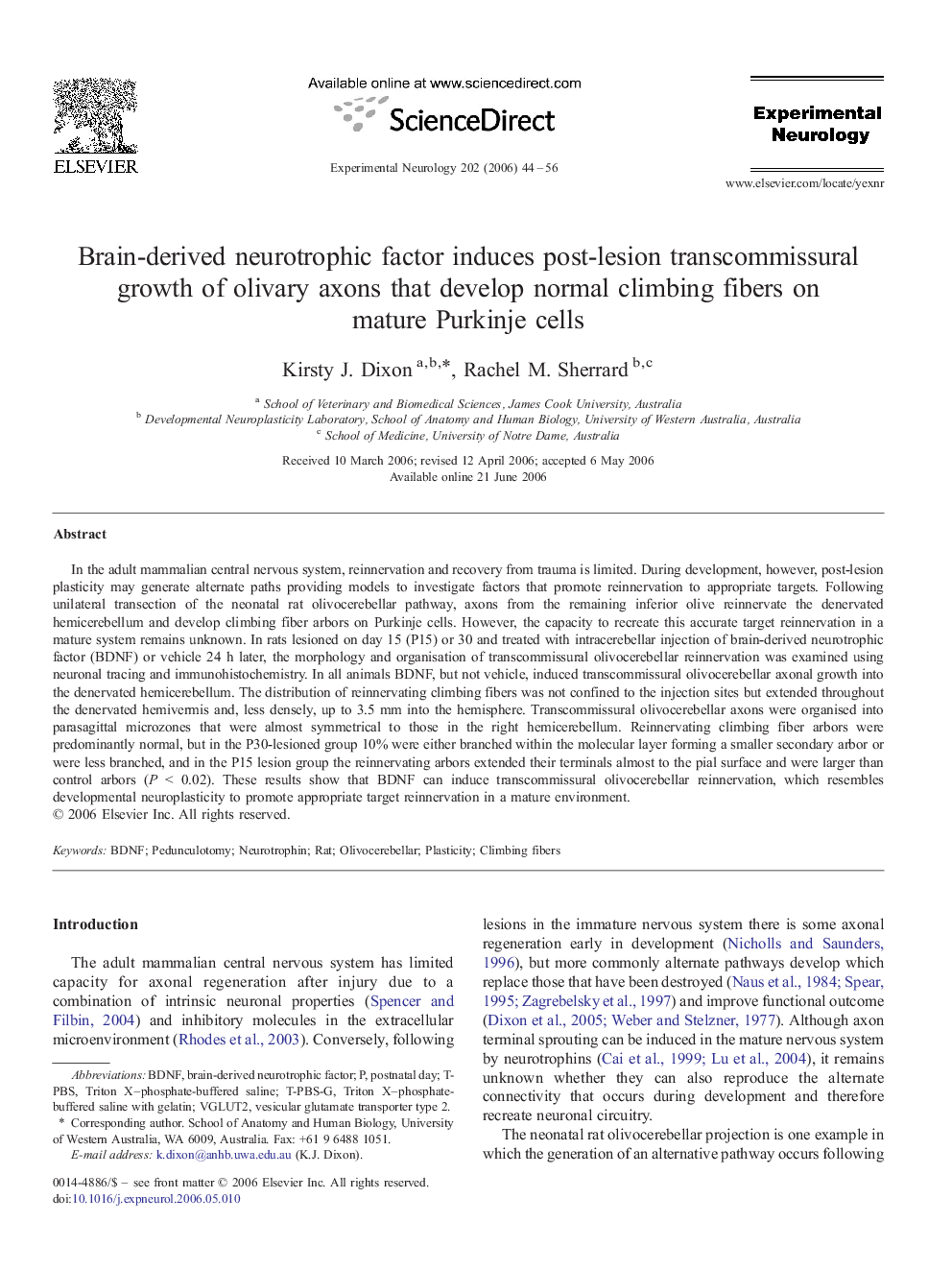| کد مقاله | کد نشریه | سال انتشار | مقاله انگلیسی | نسخه تمام متن |
|---|---|---|---|---|
| 3057320 | 1186595 | 2006 | 13 صفحه PDF | دانلود رایگان |
عنوان انگلیسی مقاله ISI
Brain-derived neurotrophic factor induces post-lesion transcommissural growth of olivary axons that develop normal climbing fibers on mature Purkinje cells
دانلود مقاله + سفارش ترجمه
دانلود مقاله ISI انگلیسی
رایگان برای ایرانیان
کلمات کلیدی
موضوعات مرتبط
علوم زیستی و بیوفناوری
علم عصب شناسی
عصب شناسی
پیش نمایش صفحه اول مقاله

چکیده انگلیسی
In the adult mammalian central nervous system, reinnervation and recovery from trauma is limited. During development, however, post-lesion plasticity may generate alternate paths providing models to investigate factors that promote reinnervation to appropriate targets. Following unilateral transection of the neonatal rat olivocerebellar pathway, axons from the remaining inferior olive reinnervate the denervated hemicerebellum and develop climbing fiber arbors on Purkinje cells. However, the capacity to recreate this accurate target reinnervation in a mature system remains unknown. In rats lesioned on day 15 (P15) or 30 and treated with intracerebellar injection of brain-derived neurotrophic factor (BDNF) or vehicle 24Â h later, the morphology and organisation of transcommissural olivocerebellar reinnervation was examined using neuronal tracing and immunohistochemistry. In all animals BDNF, but not vehicle, induced transcommissural olivocerebellar axonal growth into the denervated hemicerebellum. The distribution of reinnervating climbing fibers was not confined to the injection sites but extended throughout the denervated hemivermis and, less densely, up to 3.5Â mm into the hemisphere. Transcommissural olivocerebellar axons were organised into parasagittal microzones that were almost symmetrical to those in the right hemicerebellum. Reinnervating climbing fiber arbors were predominantly normal, but in the P30-lesioned group 10% were either branched within the molecular layer forming a smaller secondary arbor or were less branched, and in the P15 lesion group the reinnervating arbors extended their terminals almost to the pial surface and were larger than control arbors (PÂ <Â 0.02). These results show that BDNF can induce transcommissural olivocerebellar reinnervation, which resembles developmental neuroplasticity to promote appropriate target reinnervation in a mature environment.
ناشر
Database: Elsevier - ScienceDirect (ساینس دایرکت)
Journal: Experimental Neurology - Volume 202, Issue 1, November 2006, Pages 44-56
Journal: Experimental Neurology - Volume 202, Issue 1, November 2006, Pages 44-56
نویسندگان
Kirsty J. Dixon, Rachel M. Sherrard,